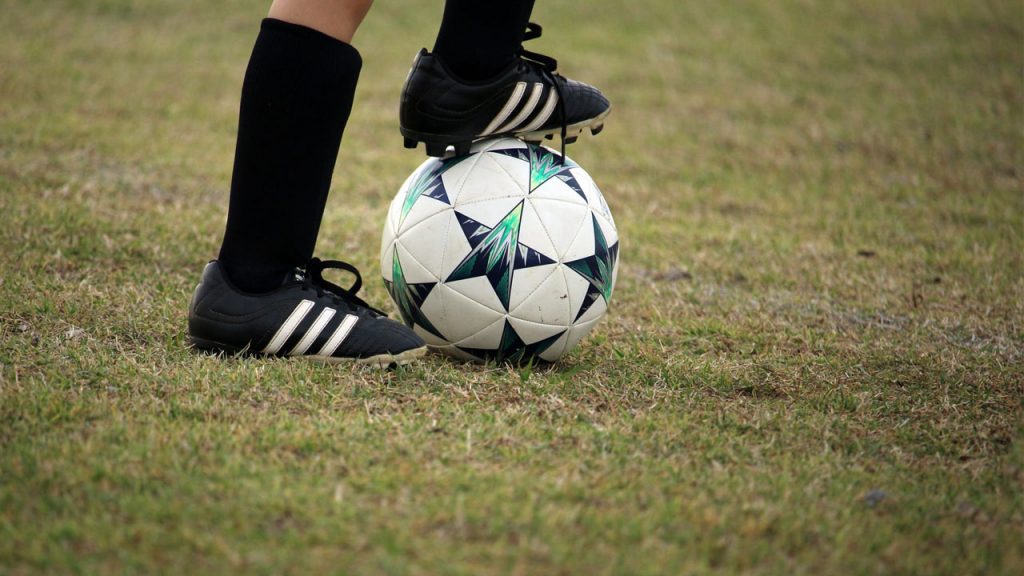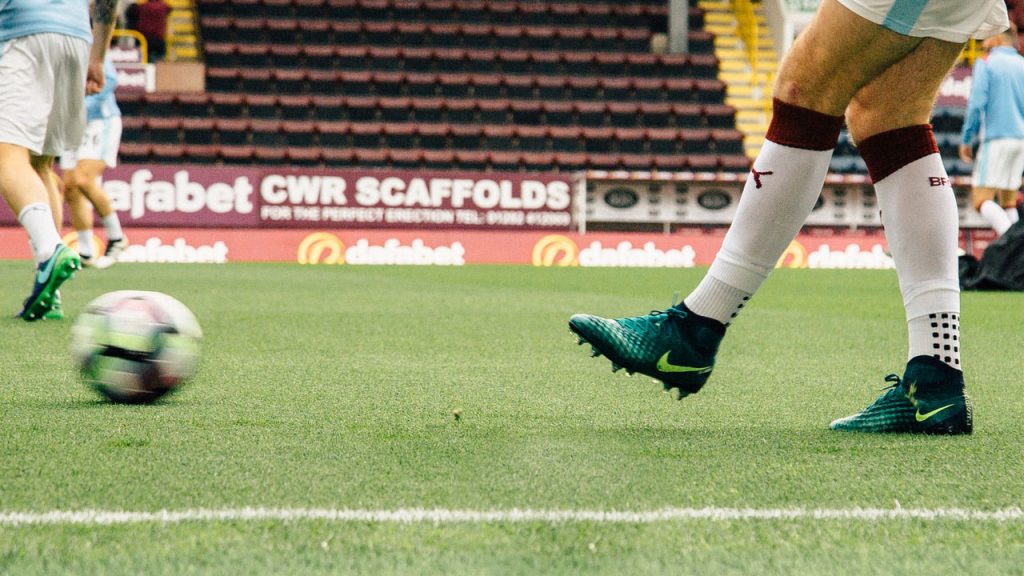Authority Soccer (authoritysoccer.com) is a participant in the Amazon Services LLC Associates Program, an affiliate advertising program designed to provide a means for sites to earn advertising fees by advertising and linking to Amazon.com. This site also participates in other affiliate programs and is compensated for referring traffic and business to them.
If you ask some soccer players, they would prefer to play with no cleats at all. It might sound surprising, but most of the Brazilian superstars we know learned to play the game barefooted.
But skipping those cases, most footballers would choose to use their cleats a little tight, not too loose. The question is, how tight would they prefer their cleats be?
Soccer cleats need to be very tight. Not to the extreme of cutting the feet’ blood circulation, but they need to be clasped to the feet for better responsiveness and sensibility to the ball touches.
Loose cleats leave a lot of space between them and the foot, decreasing precision in each touch of the ball. And since professional soccer forbids playing the game barefooted, a footballer’s best option is a pair of tight cleats.
Although practicing with no shoes at all could be beneficial, as we will see.
Are soccer cleats supposed to fit tight?
Yes, there is no gain in using bigger-than-your-foot-cleats. Precision when hitting the ball is a matter of a few inches. A bigger shoe steals those inches from you, and you end up hitting the ball with an unwanted part of your foot.
Soccer cleats were included in soccer rules in 1891, with some restrictions to shoes more often used in golf. These shoes had hard latex-like plugs, very dangerous for the practice of the sport.
In those times, soccer cleats were made of stitched leather, and the first significant change to them was introduced by the German Adolf Dassler, more known as Adi Dassler, Adidas founder. His first design had 6 replaceable nailed studs.
Soccer boots were born to protect the players during the games and not as abilities enhancers. Of course, they offered better traction and acceleration, but the responsiveness and the touch with the ball were awful. The shoes were too hard.
Things changed when soccer became popular in South America. As players were used to playing the game barefooted, soccer cleats started to be thinner and rather a second skin than protective gears.
Brazilian superstars Ronaldo, Romario, and Neymar himself played soccer barefooted for most of their youth. Most of these players (and many other kids worldwide) don’t opt to play the game without footwear; they have to because they don’t’ have shoes.
Still, practicing the game barefooted has its benefits:
- Makes the foot stronger – There are over a hundred muscles in our feet, and they need stimulus for better growth and development. Shoes might “sleep” some of our feet’ muscles; an excellent recipe to activate them is doing some footwork without any footwear.
- More adjustable feet – A soccer game requires quick responses to several switching conditions, like weather, field surfaces, rival’s style of play, game speed, and so forth. Training barefooted improves our feet’ adaptability. It prevents the players from being paralyzed against unknown game situations.
- Increases balance – The muscle activation present in barefoot soccer increases the feet’ strength and increases the player’s balance and stability.
*Note. Barefoot soccer training is meant to improve players’ first touch and ball control. Players shouldn’t try to perform hard tackles; it can be dangerous.
How do you break in tight soccer cleats?

Those who used to play with streetwear shoes or even those who used to play barefooted have a hard time getting used to soccer cleats.
But for a soccer game, there is nothing better than soccer cleats; after all, they are made explicitly for the game.
Before getting soccer cleats, you need to consider what kind of shoes you want to wear. There are two different types of soccer shoes, leather or synthetic.
Leather soccer cleats offer superior protection to your feet as they are thicker than synthetic ones. Players who occasionally receive more fouls or kicks will find that protection quite handy.
Leather’s elasticity adjusts the shoe better to the feet, offering more comfort. However, their elasticity might end up being an issue in the long run. Leather cleats could exceed in their stretching, forcing us to replace them.
As they are also softer, that makes them grant a better feel of the ball when touching it.
Leather is more absorbent than synthetic, of course, and that might be an issue too. Playing under harsh conditions like rain or snow makes them heavier. Their absorbency makes them also harder to clean.
Finally, leather soccer cleats offer a smaller variety of colors and designs.
Special mention to kangaroo leather soccer cleats. Research showed that kangaroo leather fibers’ composition is more consistent than cattle leather fibers. This biological difference makes kangaroo leather more light, thin, and as strong as cattle leather.
Synthetic cleats, in opposition to leather, are almost entirely waterproof. As they absorb less water and humidity, they are lighter under adverse weather conditions and effortless to clean.
As the material is more rigid than leather, the sensibility to feeling the ball decreases, downgrading, in some cases, ball control and first touch. The feet might feel kinda anesthetized.
Synthetic cleats might also be less comfortable than leather ones, and they tend to last less time; they usually break more easily.
In regards to design and colors, synthetic cleats offer a broader spectrum of choice.
After you decided what kind of cleats you prefer, you can follow these tips to break into them easily:
- Soak in hot water – You need a bucket big enough to fit both of your feet and fill it with warm water. Put your soccer cleats on, with socks and all, lace them tight and dip them into the bucket. You can apply a soft massage to the side of your feet, keep them submerged for 20 minutes.
- Lubricate the interior – After you soak your cleats for 20 minutes, apply a thin layer of vaseline in the interior of your shoes. The vaseline helps to make the cleats more malleable.
- Walk the weirdest walk – Wearing those soaked full of vaseline cleats might be between weird and uncomfortable, but it is necessary. Walk around for 15 or 20 minutes so the shoes can mold to your feet in motion. Jogg a little and kick the ball won’t harm, it might be a good idea.
- Let them dry – Once you are done with all that, let the cleats dry. Don’t let them in direct contact with sunlight, and stuff them with newspaper. The paper will prevent the cleats from shrinking to their original size.
- Use them. After the drying process is finished, maybe the next day, use them for twenty minutes every day for a couple of weeks. You can sprint or practice any soccer drills so your feet can get familiar with the new form of your cleats.
How long does it take to break into cleats?

It depends on each person, but after the adaptation process described above, you will break into your cleats in two or three weeks.
However, soccer cleats brands have different styles in their shoe’s characteristics. For instance, PUMA tends to make their shoes tight in the middle and lose the tip. Nike soccer cleats usually present uniformity in their tightness, although you will find several styles within the same brand.
Another detail to consider is shoelaces. Shoelaces were historically placed in the so-called chest of the foot, the instep. Some soccer shoots require shooting the ball with that specific part of your feet, and shoelaces might help or not; that will depend on how each player feels about it.
Some modern soccer cleats have the shoelaces placed to the shoe’s side, leaving the instep clean; some players might prefer that shoe style to have a better feeling when kicking the ball.
Should I buy cleats a size bigger?

No, there is no need for that. As we have seen above, soccer cleats must be tight for better performances. You should get cleats of your size and stretch them using the steps explained in this article.
As a matter of fact, some soccer players decide to wear cleats half-size smaller. As cleats usually extend slightly after their adaptation to the feet and the constant use, using smaller shoes makes them fit perfectly when they stretch.
Using soccer cleats bigger than your feet will make you fumble, and your feet will dance lose inside of them, making you also lose sensitivity and ball control.
Oversized soccer cleats are also dangerous. As your feet have some extra space inside them, they can slide, and you can get blisters.
Many people suffer the first days of using new cleats, mostly if they are made of synthetic material. This annoying experience makes them think that perhaps getting bigger cleats would be better for them.
It is essential to learn how to differentiate when a pair of soccer cleats are tight in your feet, and when your feet’ pain is more significant than it should be. If the pain is too much, you should pick a different size or try another brand.
The key is to mold the soccer cleats to your feet, so the discomfort is minimal. Soccer cleats are footwear meant to be used for 90 minutes, 120 tops. Perhaps the confusion is there; people think they are shoes to wear an entire day.

